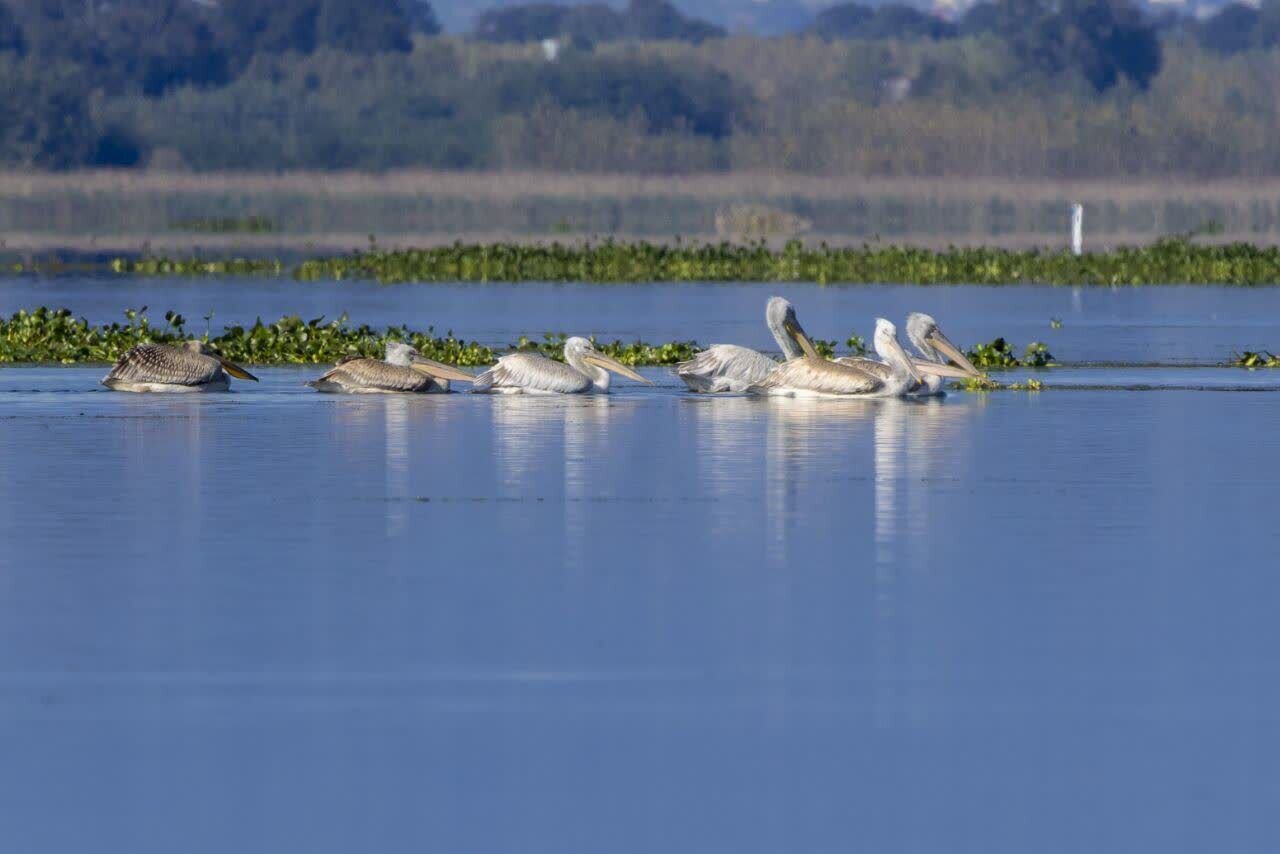Pelicans wintering at Anzali Wetland

TEHRAN –Anzali Wetland in the northern Gilan province is playing host to the first group of migratory birds, especially pelicans.
Covering more than 19,000 hectares, the Wetland is located near the Caspian Sea.
Every year, hundreds of white and gray pelicans land in Anzali Wetland to spend the winter, IRIB reported.
The grey pelican is known to be among the threatened species.
Main wintering habitat in West Asia
Iran is the most important country in West Asia in terms of housing migratory birds in winter as around two million birds fly each year to spend winter in the country’s wetlands.
Encompassing numerous wetlands, reservoirs, and diverse water bodies, Iran welcomes millions of migratory birds every year.
The country has also emerged as the most important stopover for migratory birds in their flight route from Siberia to the Nile as sixteen percent of them select to spend the winter in the country, ISNA quoted Hassan Akbari, a Department of Environment official, as saying.
He made the remarks on the occasion of World Migratory Bird Day which is celebrated on May 11 to raise awareness about the importance of migratory birds and the need to protect them.
A diverse array of migratory birds fly to the country, with more than 160 species of aqua and waterside birds identified in Iran which is a significant number.
Despite limited water resources in the domestic habitats of the country, the study of the migratory bird population trend shows that the abundance and diversity of the birds that enter the country have not decreased. The majority of them have flown to the coastal areas of the Caspian and the Persian Gulf, though.
Iran hosts more than five percent of the world’s migratory birds in 450 sites in winter, Akbari said.
“Every year some 30 to 40 million birds are counted all over the world and the related statistics are recorded in the International Waterfowl Census (IWC) database,” he added.
The collected data and related analyses have significant scientific value in protecting wetlands, beaches, and biodiversity, he noted.
Iran joined the international census of wintering water birds as the first West Asian country at the same time as European countries in 1976.
In the early years, the counting of water birds was limited to the species that could be hunted including swans, geese, ducks, and common terns. Since 1987, other aquatic birds have been added to the list.
Pointing out that in the past 6 decades, the counting of wintering water birds in Iran has been a priority of the Department of Environment, he added, “Thanks to favorable geographical conditions, climatic diversity, wetlands, and aquatic habitats, including the Caspian Sea in the north, the Persian Gulf and the Oman Sea in the south, Iran hosts millions of migratory and wintering water birds yearly.”
The annual census for migratory birds in Iran begins in the middle of the Iranian calendar month of Dey (December 22-January 20) and ends in the middle of the month of Bahman (January 21-February 19) in more than 450 sites in 30 provinces with the help of headquarters, provincial experts and professional birdwatchers of non-governmental organizations.
In the last three decades, over 8.1 million birds were counted on average, which is about five percent of the world’s population of migratory birds and more than 16 percent of the population of migrant birds taking the route from Siberia to the Nile.
MT/MG
